Exciting Thursday news: we have four new PIR breakout boards! Passive Infrared (PIR) sensors are great for detecting motion in a specific area around the sensor. The sensors measure IR light coming from objects in their detection area, making them perfect for applications like automatically controlling power to lights, cameras, screens, etc., when motion is detected. It is often a key element in home security and automation systems, but engineers and hobbyists are finding many creative ways to use PIR to increase efficiency, such as sensing when someone is standing in front of a vending machine so the display only lights up when it needs to, saving energy and costs.
Get more active with your Passive Infrared!
These boards use two versions of the EKM-series PIR sensors from Panasonic® to offer low profile motion-sensing options over I2C for both battery-powered and continuously-powered applications. The Qwiic versions of these PIR breakouts feature an ATTiny84, with firmware that handles monitoring the sensor's output signal, debouncing that signal along with a configurable interrupt, and translating it all to the I2C interface (which means it's easy to add a PIR to an existing Qwiic/I2C project).
Getting Started
To make getting started as easy as possible, SparkFun has developed tutorials and Arduino/Python libraries. You can always reach these from the product pages, but here are some quick links:
SparkFun Qwiic PIR Boards
SparkFun PIR Boards
Have any creative thoughts for PIR? Share them in the comments.
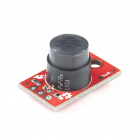
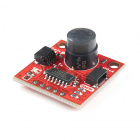


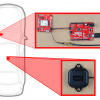

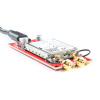






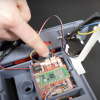
Rob says "milliamps" several times during the video, but the text on the video, as well as that on this page says "uA" ("microamps"). I suspect that the microamps is correct, but would like to know for sure.
It is microamps, μA.
The data sheet says "micro" - with the "mu" symbol. Not the "u", which is imprecise, but naturalized. (Engineers amiright?)
FWIW, I got my engineering degree 41 years ago, and I had started playing with electronics about 55 years ago. Many, many things (beginning with the mechanical typewriters in the '60s, and through to this forum) either have no mu (or many other Greek letters, for that matter), so the "u" is a common substitution.
There is a story about an engineer at the "Radiation Lab" during World War II needed a capacitor rated at something like 3.6 microfarads at something like 500 volts. The secretary who typed up the order couldn't find a mu on her typewriter, so just skipped it. Because of the extreme security of the Radiation Lab (they were developing radar systems), the manufacturer didn't ask questions, and built a 3.6 farad cap capable of dealing with 500 VDC. To get it to the lab, they put railroad trucks underneath it and transported it as another railroad car. Had the secretary typed "3.6uF", the engineer would have gotten what he wanted and several thousand dollars of tax payer money would have been saved.
Also ALT+230 does work to get µ, engineers have gotten lazy. Myself included.
Love that story 134773.
Thanks! I stand (or more accurately, sit) corrected! Maybe mentioning it in "formatting help" would, uh, help. If they were to add it, I'd also like to see how to get a capital omega, an "Angstrom symbol", and a lower case omega (as in radians/sec). I'm sure I could dig it out of the "full syntax guide", but the time or two I've bothered with that, what I found wouldn't work here, so I got discouraged by it. Let's see if based on your hint, ALT+234 gets me a pi: ™£¢ (maybe the fact that I'm using a MacBook Pro has something to do with it).
Well, a bit more experimenting (and a Google search) has led me to "Edit>Emoji & Symbols" to get a µ or an Ω, and to get a π I use option+p. Å can be had by shift+option+A. Option+z also gets me an Ω. And option+0 gets me º (degree symbol). There seems to be quite a few others, but I don't have ∞ time.
That is a great story! The "u" is an accepted substitution and perfectly fine. I was being intentionally provocative (sorry). But it got us your contribution. Thank you for that story!!